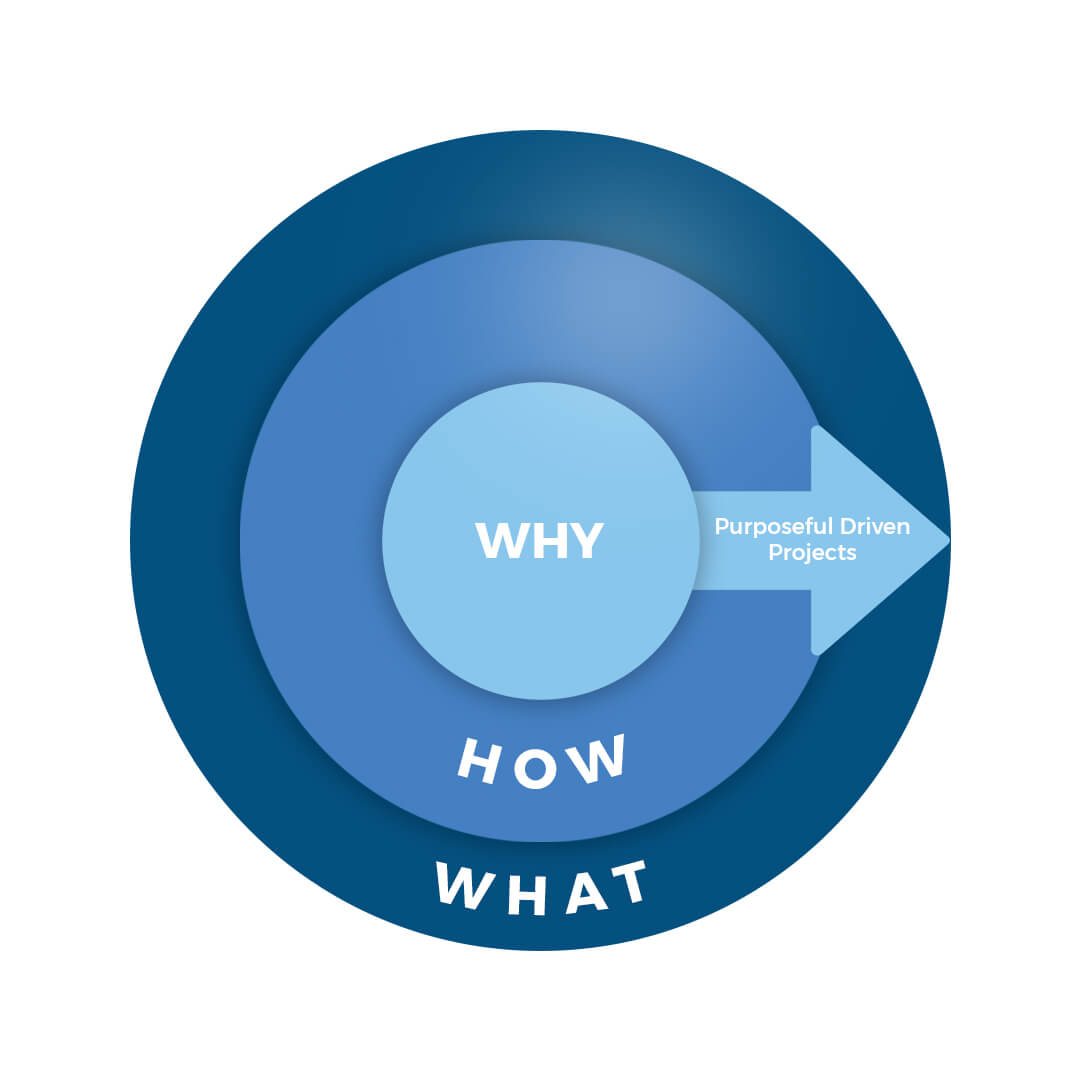When you’re in a foreign country looking to go on a road trip, your first option will be to get the help of Google Maps. You need directions to know where you’re headed. The same thing happens with organizations when developing a product. Before creating the product, they need to define goals and communicate how short-term efforts will match the long-term business goals. And that’s the role of a product development roadmap. It helps businesses to develop a plan of action for how their product will evolve.
This article will explain how to build an efficient product development roadmap and define the best tools that can help you throughout the process.
Table of Contents
What Is a Product Roadmap?
A product roadmap is a visual summary that traces out the strategic plan of your product. It outlines the vision, direction, and expected progress of a product over time. It also helps product managers and overall teams to align the organization’s short and long-term goals for the product and how these would be achieved.
Most development teams use software development life cycle models like Agile and Waterfall to trace how a software product will be built and maintained over time. It gives them an overview of what needs to be done and how.
Similarly, product roadmaps help teams define an action plan for their product. It’s not only about the “why” and the core purpose of a product, but it’s also about understanding the “how.” It transforms an idea into well-defined steps.
Benefits of Using a Product Roadmap
A product development roadmap gives teams, stakeholders, and executives, a visual representation of a strategic plan highlighting the key steps required to accomplish the desired goal. Overall, the main benefit is that it helps development teams know what needs to be done, their progress in a specific time frame, and who is involved.
What characterizes product roadmaps is that they are easy to make, practical, and it helps organizations predict how successful their product will be. This, with time, helps them optimize their time and resources.
Other benefits of building a product development roadmap are:
- Tracking progress
- Creating transparency in an organization
- Helping teams prioritize steps and resources
- Enabling teams to align their vision around product features
- Providing a framework with the steps and directions to reach the desired outcomes
- Facilitating stakeholder collaboration
5 Key Steps to Building a Product Development Roadmap
Roadmapping will help you communicate the main objective, plans, and features of a product. Depending on your needs, you can decide what components to include based on what you want to highlight – the strategic aspects, the resources, the features, etc.
Here are five key steps you need to consider when building a product development roadmap.
1. Define the purpose of the product and your customers
A common mistake that makes teams fail when developing product roadmaps is not having a defined purpose. The “why” is different from the “what” – you could know precisely what you’re building and have a clear idea of the features and of who your key audience is, which is great. But if you have no idea about the why, you’re likely to experience many road bumps in the way that could eventually put the entire product at stake.
Understanding your “why” and defining the purpose of the project is essential because it helps you trace a vision, and this, in turn, allows all the teams and the members involved in the project to work towards common goals. Everyone knows why the product matters and what its purpose is. Having shared goals and a common vision keeps consistency in what will be delivered.
These questions can help you define the purpose of your product:
- Why do you want to develop this product?
- What are the benefits of developing this product at this time?
- Why is developing this product will help users?
Another simple exercise to help you define your “why” is the golden circle model created by Simon Sinek.
Aligned with knowing the purpose of your product is knowing who your customer is. And this also involves other areas of an organization. Keep in mind that product roadmaps work across different areas, not just one. Here, for example, marketing teams help define more about the user persona and if the purpose and common goal of the product make sense with what a customer is seeking.
2. Identify your objectives and key results (OKRs)
A growing number of companies started adopting objectives and key results (OKRs) as a strategy to define and set their goals. For product managers, specifically, OKRs help them trace a plan that aligns with its general mission.
Why are OKRs important in product management? Objectives work as a mission statement that has a specific time frame. It helps teams get inspired and know what the goal is and define the steps that need to be taken that move accordingly to that particular time frame. Key Results, on the other hand, are all about quantified objectives. What does this mean? While an objective serves as a more general purpose, a key result specifies in numbers different goals. This alignment of efforts helps them understand if they have – or haven’t met these goals.
Here is a simple example to understand this more in-depth:
– Objective: Improve the website’s User Experience.
– Key result #1: Reduce new user signup time to 30%.
– Key result #2: Increase task success rate from 60% to 80%.
– Key result #3: Increase System Usability scale from 70 to 90.
3. Build the team, brainstorm, and review ideas together
The third step of building a product development roadmap is to define what members of the organization need to be part of your dream team. Something to keep in mind is that the best product roadmaps include cross-functional teams.
Let’s say a client asked your development team to build a mobile application. If you only consider the software development team as part of the product roadmap, likely the application will fail.
Building a successful IT team for your roadmap should include all the key players that can help determine the features and aspects that will work for the product and a specific audience.
Specifically, there are four primary audiences to keep in mind when presenting and discussing the key features the product will have:
- Leadership: The board members will ensure that the product will align with the company’s primary goals and vision. When discussing the product roadmap, make sure to avoid using technical terms or overcomplicated explanations. The simpler, the better.
- Tech team: The technical experts will need to figure out how to make those ideas into reality. They will require answers such as “what”, “why, and “when” to help them define a timeline and understand exactly what other stakeholders expect from the product.
- Marketing: Marketing specialists will help you understand the best strategies to reach your target audience, whether it is email marketing best practices or social media. Discussing the product with them will provide them with a clear vision and strategy for their marketing campaigns.
- Sales: Sales managers need to understand the “why” of the product. Having meetings with them will help everyone be on the same page regarding the key features and the surprise element your product will have that makes it different from others.
You’ll have to set up different meetings and make sure you have a defined objective for each meeting; remind the team what the user persona is, the purpose of the meeting, and what your expectations are.
4. Determine key features and prototyping
Once you build your team and have clear ideas on the development of your product, it’s time to determine the key features that best support your strategy.
This step will probably take more time to define than the others because you need to research and consider the different areas for a product to succeed. It means that you’ll need to answer questions such as:
- What’s the situation on the market?
- Why would your product work?
- What is the competition doing?
- What are the new and similar products?
Based on these questions, you can start identifying key features for your product and prioritize them. Don’t try to build a product with 100 characteristics because it would be difficult to test and develop. Stay with a few but strong features that will make you stand out from the competition. And then start testing and understanding how these features will make a difference in people’s lives. There are many strategies to do such as:
- Focus groups: This is a research technique that is used to collect data through group interaction. It is built by a carefully selected group of people who discuss a topic provided by a moderator. Investigators use this technique to know more in-depth the opinions and understand why people behave the way they do in specific circumstances. In terms of product development roadmap, focus groups help teams identify key features in a product and to have a more objective perception of the product they are building based on possible users. Considering how the pandemic has changed things, having virtual focus groups instead of in-person groups may make sense. For this, you’ll need to purchase a webinar platform that’ll allow you to host the appropriate number of focus group subjects and allow for interaction with viewers to get answers to questions you may have.
- Design thinking: Consists in a process that focuses on solving complex problems in a highly user-centric way. Applying design thinking in a product development roadmap involves coexisting with a potential client and observing how clients act and think about specific situations. By observing and interacting with these potential clients, teams can understand what features bring more value to a product and what features are unnecessary. This process can be further facilitated by utilizing process mapping software, which provides visual representations of workflows and aids in the identification of areas for improvement.
Once you have determined the key features, the next phase is to build your prototype (you could create one or more than one – this depends on your product). Building prototypes is all about the “Fail fast and fail forward” motto. It is better to fail at the prototype phase than to fail when the product has already been launched.
Browse 500+ Dev Teams Available for Hire
5. Testing, beta release, and final release
In history, there have been epic failures because of avoiding this step. Companies often create products they think must be popular, but customers don’t see any value.
This step is mainly to identify what features in the prototype work and what doesn’t because, in the end, you don’t want to start building your product to realize it was an epic failure. You want to create something that clients are willing to pay and demand.
Once you have your key features and conduct these types of studies in the market, you can start testing and building your final product. Now that you’ve analyzed the market and tested different prototypes and features, it’s time to start the testing phase.
Here is where you build a simulation of your product with the key features integrated. This stage can vary depending on your product (hardware vs. software), but overall, it’s about testing how your product is received in a small group of people.
For example, let’s say you want to build a mobile application that connects people who want to start training in the park with trainers looking to increase their client base. You gather a group of people that are part of your target audience (it could be the same ones you picked for the focus group) and let them try the product. Based on their feedback, you take your product back, improve it, and test it again. In this example, someone might say that it would be helpful to have a map feature to know what parks trainers give their classes. Or someone else could say that the interface is hard to use. All this feedback is helpful to make your product better.
After this testing phase, you’re ready for the beta release that consists of the final round of testing before releasing a product to a broad audience. Here you pre-release your software is given to a large group of users to try under real conditions. Some companies even add their applications in the app stores clarifying that the app is in the beta release, so users know that it is still being tested. The same will be if you are working on a website. Test different features, if all buttons lead to the right page and if the website is fast-responding. You may use PageSpeed Insights or other tools such as a Website Speed Checker by Bitcatcha.
After the beta release, you can gather all the data from users and craft your final version of the product. Here, different team areas (engineering, customer support, sales, marketing, etc.) will work on their final release strategies to ensure the product will succeed.
Best Online Software to Create a Product Development Roadmap
While understanding the basics of all the steps is easy, it can be overwhelming to start doing the job and developing the product roadmap. Nowadays, many different tools can provide a dynamic and interactive solution.
These are the four best product development software to use:
1. Aha!
Aha! is one of the best roadmap tools, and it currently has more than 250,000 teams using it. The tool provides six different templates that adapt to your team’s needs. It consists of an end-to-end project management solution that combines core product manager tools with road mapping features to visualize the entire project lifecycle.
The platform offers a wide range of tools for portfolio management, release management, idea management, product strategy framework creation, and marketing strategy planning, among others.
Main features:
- It helps you articulate your vision and business model.
- Prioritize features (you can create a custom scorecard).
- Build visual roadmaps to help you trace your plans.
- It integrates with various platforms such as Google Drive, Slack, Salesforce, JIRA, GitHub, etc.
- It informs team members automatically of updates or changes.
- It enables customers, employees, and other stakeholders to freely share their ideas and concepts in the same space.
- Teams can customize the tool for their needs.
2. ProductPlan
ProductPlan helps companies create roadmaps and product strategies in a cost-effective way. It is an ideal roadmap tool for those teams that prefer a visual layout of their projects. It enables managers to create a visually attractive product roadmap, and it also lets them create and manage estimates related to different projects.
Additionally, what makes ProductPlan a different alternative is that teams can create different versions of the same roadmap for different audiences. It’s the best option for teams who want to build an extensive collection of ready-to-go roadmap templates.
Main features:
- Fully customizable layouts
- Easy import and export to a PDF, image, or spreadsheet
- Communication and collaboration management
- It has an easy drag and drop functionality
- It offers a robust security mechanism making all the data safe (even when shared with external people)
- Integrates with other project management tools
3. AirFocus
This tool focuses on fast and easy roadmapping for effective product development. It integrates with different apps, and it has a drag-and-drop interface that lets you switch between multiple views. It characterizes in helping teams prioritize and visualize projects.
It is different from others because it employs algorithms that score items based on input, helping teams make the right product decisions. Therefore, if you’re looking for the best RICE scoring roadmap tool, Airfocus is the best option.
Main features:
- Customizable frameworks and formulas
- Contains all the basics of project management (Kanban board, Gantt roadmapping, and priority chart)
- 24/7 customer support
- Easy to use
- Flexible sharing with unlimited viewers
- Real-time collaboration
- Enables you to visualize your priorities with an easy-to-use ranking system
4. Roadmunk
Roadmunk is designed to help you build versatile roadmaps that will easily adapt to your needs. It is built around three main types of the roadmap: Timeline (a traditional roadmap), Swimlane (Kanban board), and Master (high-level view).
The timeline view is the regular/traditional product roadmap, while the Swimlane view provides teams that work with scrum or agile with a streamlined Kanban board. And lastly, the Master view combines multiple product roadmap styles enabling teams to get a complete overview of the product’s features.
Roadmunk is the best option when it comes to building completely customizable roadmaps.
Main features:
- Provides a task ranking feature
- Enables the creation of custom workflows to facilitate processes
- Measures the progress of tasks
- Contains pre-built roadmap templates
- Roadmunk learning center, product management resources, and ebooks
- Integrates with external applications
Key Takeaways
A software product development roadmap will define the strategic plan of your product. Its purpose is to build a software product that aligns with your business’s strategic goals and objectives.
Remember to:
- Understand the purpose of your product. This will help you communicate the vision to your team easily.
- Establish your OKRs at an early stage of the roadmapping.
- Build a cross-functional team.
- Pay attention to the feedback of your prototype.
- Ensure your software product has the most relevant features and conduct a beta release before the final release to gather the last important input.
If you are looking for quality software engineers to help you build your product, contact YouTeam, and we’ll find suitable candidates in a few days.










